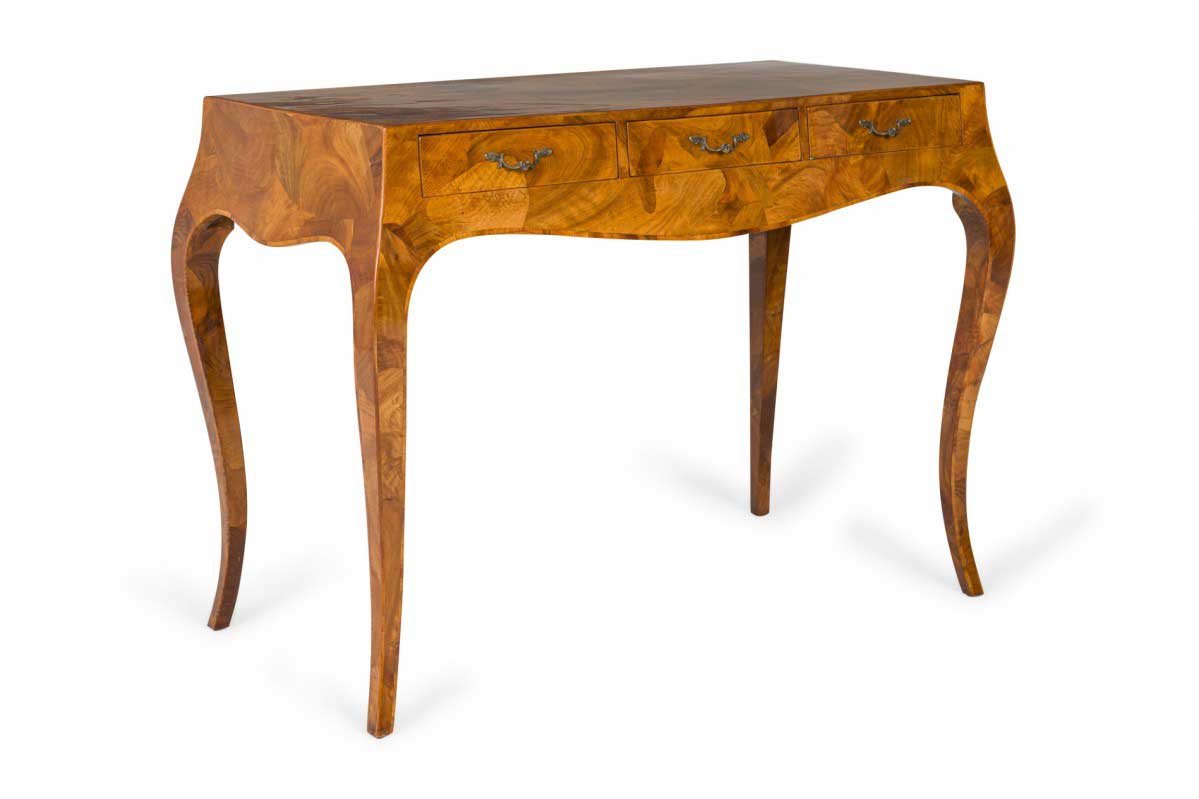X
{{ modalTitle }}
PLEASE FILL IN THE REQUIRED FIELDS.X
X
{{ modalTitle }}
Choose one of the options below.X
ITEM SUCCESSFULLY
ADDED TO PROJECT
Italian Mid-Century Oyster Burl Three Drawer Sabre Leg Writing Desk
 Mid-Century
Mid-Century Italian
Italian Tables, Office/Library
Tables, Office/Library Desks/Library Tables, Desks/Conference/Library Tables
Desks/Library Tables, Desks/Conference/Library Tables
Newel Warehouse
32-00 Skillman Ave
Long Island City NY - 11101
 (212) 758-1970
(212) 758-1970
Italian Mid-Century Oyster Burl Three Drawer Sabre Leg Writing Desk

Newel Warehouse
32-00 Skillman Ave
Long Island City NY - 11101
 (212) 758-1970
(212) 758-1970
 Tables, Office/Library
Tables, Office/Library Desks/Library Tables, Desks/Conference/Library Tables
Desks/Library Tables, Desks/Conference/Library TablesSabre leg
Type of leg form in the shape of a sabre, either round or square-sectioned, and gently tapering to the ground. Originally used by the Greeks as the leg form on klismos chairs, sabre legs became popular during revival movements in the 18th and 19th Century with NeoClassical styles including the Empire and Regency periods.
Burl
Burl is a type of wood that comes from an irregular growth on a tree. Burl wood is usually cut in a thin veneer form to show its exquisite detail. Burl wood is most common in walnut, elm and yew. Burl wood has been used to decorate furniture for centuries and was highly popular during the Biedermeier period.
Veneer
A wood finishing technique in which thin sheet of fine wood is applied to a the surface of a coarser wood or other structural material for decoration. Veneer is used to give furniture pieces a finer, more pleasing appearance. It was first used in ancient Egypt, classical Greece, and Rome, but did not appear again until the 17th Century in the Netherlands.
Sabre leg
Type of leg form in the shape of a sabre, either round or square-sectioned, and gently tapering to the ground. Originally used by the Greeks as the leg form on klismos chairs, sabre legs became popular during revival movements in the 18th and 19th Century with NeoClassical styles including the Empire and Regency periods.
Burl
Burl is a type of wood that comes from an irregular growth on a tree. Burl wood is usually cut in a thin veneer form to show its exquisite detail. Burl wood is most common in walnut, elm and yew. Burl wood has been used to decorate furniture for centuries and was highly popular during the Biedermeier period.
Veneer
A wood finishing technique in which thin sheet of fine wood is applied to a the surface of a coarser wood or other structural material for decoration. Veneer is used to give furniture pieces a finer, more pleasing appearance. It was first used in ancient Egypt, classical Greece, and Rome, but did not appear again until the 17th Century in the Netherlands.
Sabre leg
Type of leg form in the shape of a sabre, either round or square-sectioned, and gently tapering to the ground. Originally used by the Greeks as the leg form on klismos chairs, sabre legs became popular during revival movements in the 18th and 19th Century with NeoClassical styles including the Empire and Regency periods.
Burl
Burl is a type of wood that comes from an irregular growth on a tree. Burl wood is usually cut in a thin veneer form to show its exquisite detail. Burl wood is most common in walnut, elm and yew. Burl wood has been used to decorate furniture for centuries and was highly popular during the Biedermeier period.
Veneer
A wood finishing technique in which thin sheet of fine wood is applied to a the surface of a coarser wood or other structural material for decoration. Veneer is used to give furniture pieces a finer, more pleasing appearance. It was first used in ancient Egypt, classical Greece, and Rome, but did not appear again until the 17th Century in the Netherlands.




















